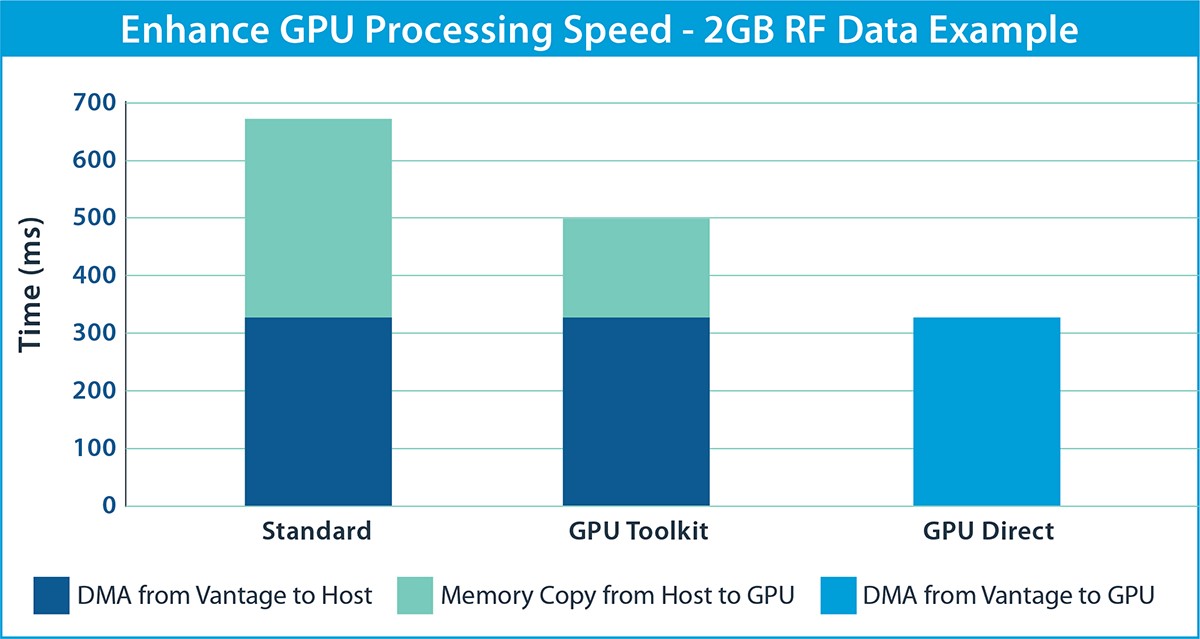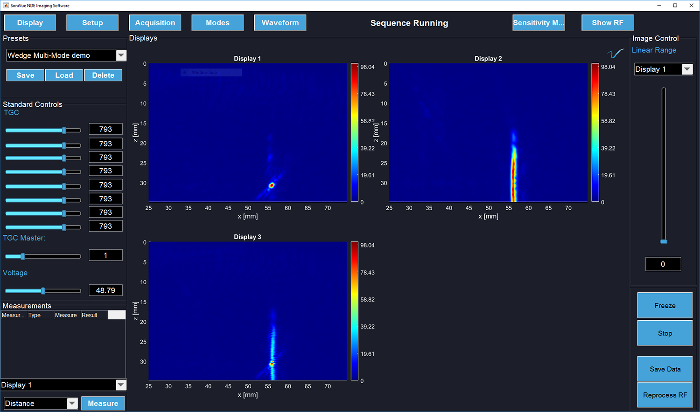Visit Verasonics at IEEE-IUS October 11-13 in Venice!
We are pleased to announce upcoming scientific presentations using the Vantage™ Research Ultrasound System, and the latest advances in ultrasound research technologies at the upcoming IEEE IUS 2022 Symposium. The symposium will be held 10th-13th of October, in Venice, Italy. Verasonics will be exhibiting in booth B1 in Palazzo del Casino, first floor. If you are not attending the conference in person, please visit our virtual booth.
Verasonics will participate in several scientific presentations and announce three new products during the symposium, including GPU Toolkit with GPU Direct Option and a new Row-Column Array Transducer. The Verasonics team will be available to present our newest offerings and engage in discussions on ultrasound research on a variety of topics.
Scientific Presentations Include:
Poster Sessions
Authors: Simon Montoya-Bedoya, Daniel Rohrbach, et al.
Poster Presentation Paper ID: 2194
Date and Time: Wednesday, October 12 at 10:00 AM
Session Code and Title: B2P-26, NDE – General NDE Methods III
Authors: Simon Montoya-Bedoya, Daniel Rohrbach, et al.
Poster Presentation Paper ID: 2269
Date and Time: Wednesday, October 12 at 10:00 AM
Session Code and Title: B2P-26, NDE – General NDE Methods III
Title: In-Vivo 3D Passive Elastography Using Row-Columns Arrays: Proof of Concept
Authors: Miguel Bernal, Nicolás Benech, et al.
Poster Presentation Paper ID: 1530
Date and Time: Wednesday, October 12 at 8:30 AM
Session Code and Title: B1L-07, Muscle Elastography Session
Panel Discussions
Title: Ultrasound Research in Latin America: Global Opportunities and Scientific Challenges
Description: The aim of this panel is to present and discuss scientific and technological challenges in Latin America, while promoting emerging opportunities in connection with the international ultrasound community.
Moderator: Matthew Urban (Mayo Clinic, USA)
Panelists: Karen Volke Sepulveda (Universidad Nacional Autonoma de Mexico, Mexico), Miguel Bernal (Verasonics SAS, Medellin, Colombia), Theo Pavan (Universidade de Sao Paulo, Brazil)
Date and Time: Monday, October 10 at 6:30-7:30 PM
Location: Sala Perla – Palazzo del Casino 1.1
Patron Seminars
Title: Breaking Speed Limits: High Performance Computing with the Verasonics System
Description: To keep pace with larger real-time ultrasound data needs, Verasonics uses High-performance Computing (HPC) technologies, such as the new GPU Toolkit with GPU Direct, to enable users to process data at application appropriate framerates. A guided example illustrating the tradeoffs between performance and development time will provide the programmer with direction in applying these HPC capabilities to their own applications.
Presenter: Bryan Cunitz, Verasonics’ Ultrasound Scientist
Date and Time: Tuesday, October 11 at 10:30-11:30 AM
Location: Sala Welles – Palazzo del Casino Mez.
Short Course
Title: Essentials of Ultrasound Imaging: An Introduction
Speakers: Peter Kaczkowski, Verasonics Director of Ultrasound Science, and Thomas Szabo, Boston University Research Professor
Description: This introductory course is intended to give students and those newly entering the field of ultrasound imaging an overview of medical ultrasound. We provide a framework for introducing the concepts of how an ultrasound system images the body and how it can be applied to different applications. First, we present how tissues interact with sound waves through a series of simulators. Second, we follow signals through an imaging system as they turn from electrical pulses in a beamformer and transducer into acoustic waves and back into electrical signals and finally into an image. Third, we demonstrate different types of imaging modes and their role in the visualization of three-dimensional objects. Fourth, we explain how an ultrasound research system can be reconfigured to serve different functions and applications. Finally, we provide a brief overview of the different branches and specialized applications of ultrasound. Throughout the course, we demonstrate the principles by using special purpose interactive computer simulators as well as live experiments and imaging with an ultrasound research system.
Date and Time: Monday, October 10 at 8:30 AM – 12:30 PM
Verasonics’ Latest Advances in Research Ultrasound Technology:
New Features and Products Improve Performance, Flexibility and Speed in Ultrasound Research
Recently, Verasonics released to customers the latest Vantage System software (version 4.7.6). This software release and associated features can assist researchers using ultrasound in a wide range of application areas across biomedical and materials science. New features and products include enhancements to high-performance computing with the introduction of the GPU Toolkit Option, addition of Plane Wave Imaging to its NDE Research Software, and new GE-408 Backshell Kit.
New Vantage System features and products include:
High-Performance Computing
Verasonics’ High-Performance Computing features enable advanced computing technologies and programming techniques for use with the Vantage System in process-intensive applications. In addition to capabilities available at no cost, researchers can now choose to invest in the GPU Toolkit Option, providing reduced latency, improved frame rate, and increased data processing speeds.
GPU Toolkit Option
The Verasonics GPU Toolkit Option can simplify data transfer for better performance. Researchers can now process data on the GPU more efficiently. The GPU Toolkit Package includes an NVIDIA GPU card, Specialty Host Controller, and software license. New tools include:
- User-selected memory allocation of the Vantage buffers used in the image reconstruction process. The current default for the system is the CPU, options include:
- Default allocation on the host PC’s RAM.
- CUDA-allocated host memory that enables faster asynchronous memory copies between the host computer and the GPU device.
- CUDA-allocated unified memory that simplifies CUDA programming by leveraging NVIDIA’s unified memory architecture.
- An Event Profiling Tool that allows users to see timing information for each operation in the event sequence. This provides users with the information needed to identify bottlenecks in data processing pipelines; this can help focus optimization efforts most efficiently.
- A 1-step compilation of CUDA source code into .mex files that does not require the MATLAB® Parallel Computing Toolbox.
- A set of example codes that illustrate how to properly write synchronous or asynchronous acquisition sequences that leverage GPU external functions.

NDE Research Software
This Vantage System upgrade adds the following new features to Verasonics’ NDE Research Software:
- Plane Wave Imaging for NDE: all native imaging modes, inspection geometries and custom user imaging modes are fully compatible with plane wave acquisition.
- Enhanced user customization options that improve versatility of Vantage. Users may now import custom functions to directly modify the RF data buffer between acquisition and image reconstruction. This additional layer of custom signal processing can be used in conjunction with both native and custom imaging.
- Arbitrary transmit waveform can be specified with Vantage. Together with custom processing, users are enabled to incorporate their own pulse compression or other signal coding techniques into the software. Additionally, arbitrary array geometries are supported allowing, for example, the use of curved or conformable arrays.
Customers who have purchased Verasonics’ NDE Research software will receive these enhancements at no charge when upgrading to this software release.

GE-408 Backshell Kit and UTA 408-GE Firmware Update
Verasonics continues to expand options for researchers developing custom probes with the introduction of the GE-408 Backshell Kit. This new Backshell Kit is recommended to researchers developing non-muxed transducers for use with the UTA 408-GE. The GE-408 Backshell Kit can accommodate up to 256 elements and features high-performance shielding and a pin-out arrangement designed to reduce crosstalk.
In addition, new firmware has been added to the UTA 408-GE enabling automatic selection between GE Healthcare’s proprietary HVMux programming when used with GE Healthcare Probes.
Remember to Attend Our Next “Meet the Ultrasound Scientist” event
Our next “Meet the Ultrasound Scientist” training sessions will be held November 14th and November 16th, and will feature Bryan Cunitz, Verasonics Ultrasound Scientist, speaking on the topic of Synchronous and Asynchronous Scripting. Check our training page to register for one of these sessions.
For information on the featured products, or other Verasonics’ solutions, please contact our sales consulting team at [email protected].

